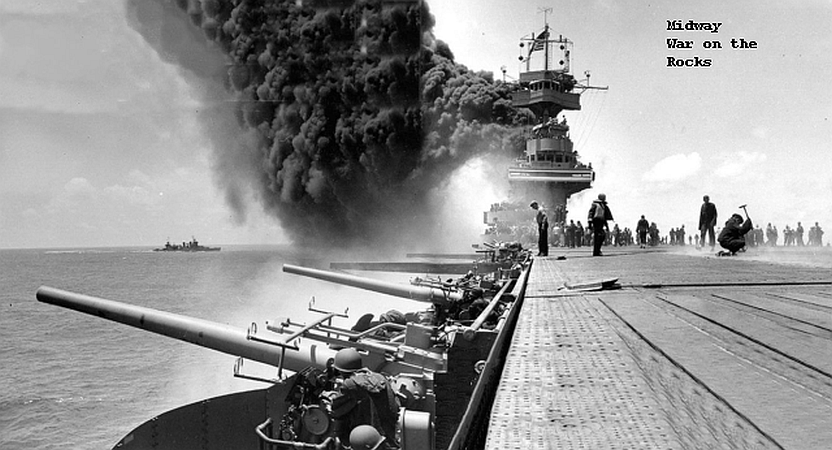
Admiral Yamamoto’s plan for June 1942 had more moving parts and more targets than just the Aleutians. Even as his two task forces sailed through the North Pacific to attack Dutch Harbor and occupy Kiska and Adak—to establish a toe hold on the American continent, the Admiral sent his main carrier force to Midway Island in the South Pacific. There he hoped to draw the American carrier fleet into an ambush that would allow him to destroy it.
Link to another story “Akutan Zero”
Success depended on surprising the Americans, but that didn’t happen. On May 15 a team of crypto analysts at Pearl Harbor broke the Japanese naval code and American intelligence knew at least the outline of the Japanese plan. The American Navy wouldn’t fall blindly into Admiral Yamamoto’s ambush at Midway. And American commanders had a little bit of time to organize a defense in the Aleutians.

In the end, at Midway, events—and the history of WW2—took a massive turn. Luck, as much as skill, led the United States Navy to a decisive victory. The Japanese lost the initiative and would never regain it. Japan would play defense for the rest of the war.

In shock, his grand strategy in shambles, Yamamoto debated for a time. At first blush, the assault on the Aleutians looked like a waste of time. He considered withdrawing task force 2. But Japan still needed to defend itself at the north. And an Aleutian victory might help counter the impact of the Midway disaster on the Japanese public.
He ordered Admiral Hosogaya to proceed with his invasion.
On June 9 American commanders learned that the Japanese occupied and held American territory at Kiska and Attu (the Japanese Admiral had found Adak too vulnerable to American air power and occupied Attu instead).